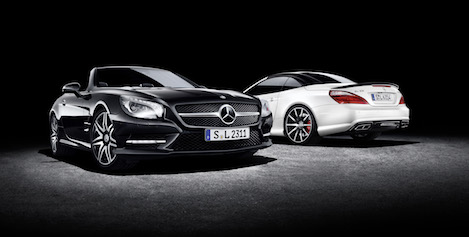
Everyone knows that you want a six wheeled G-Class, baby
solidThinking (part of the Altair group) has just announced that its solidThinking Inspire application for quick topology optimisation has been certified by Daimler AG.
As the press release states: “With this certification, the tool becomes available to all design engineers at the customer as part of the Altair HyperWorks computer-aided engineering software suite.”
The release continues with “The automotive industry is continually striving for lighter and more structurally efficient designs to meet global emission regulations while improving product performance.
“With solidThinking Inspire, these goals can now be achieved during the initial conceptual design phase of a new component or system, since the tool supports a simulation driven design process.
“Furthermore, solidThinking Inspire helps design engineers follow the functional and resource-efficient design rules found within nature – an approach often called biomimicry – for additional inspiration. This typically results in more organic looking shapes and structures than traditional design methods.
“With the Daimler certification, all design engineers within the car and truck development departments of the company [Editor’s note: remember, Daimler owns the Mercedes Benz, Smart, Freightliner, Fuso, Westerm Star and several other marques] may now use solidThinking Inspire within their projects, giving them an opportunity to create efficient structures with minimum weight.
“This works for components, assemblies, and entire systems. Design engineers may also use solidThinking Inspire to apply a required stiffness on a component where needed, helping to avoid undesired vibrations and contributing to overall vehicle comfort and quality.”
Why is this interesting?

The use of traditional simulation, although broadening and maturing, is a complex and involved process – and rightly so. This has been Altair’s stamping ground for quite a few years and its topology simulation system, OptiStruct, has been widely adopted by a lot of organisations, particularly in the automotive and aerospace realm.
The issue is that while OptiStruct is an incredibly powerful system, it’s a traditional one that requires investment of time and a great deal of knowledge to use correctly and accurately.
solidThinking Inspire takes the same approach and makes it easier to use, in a more informal manner and so lets a much greater number of designers and engineers take advantage of the benefits of topology optimisation.
Essentially, a designer or engineer can take a space envelope (modelled from scratch or imported from a CAD system), add in the operating characteristics and have the system perform a topology optimisation to give an indication of new forms that solve those performance or structural requirements.
It does this, without going into too much detail, using FEA techniques. The system looks for areas where there’s little stress/strain and removes those elements in an iterative manner, to achieve a form that gives the minimum weight/material usage according to the parameters you’ve defined.
While you won’t get a final design out of the system, it can throw up new, novel and interesting concepts that might not be immediately obvious and push design exploration in a different and perhaps more efficient direction. We took a look at the latest release last year if you’d like to learn more.
Of course, it doesn’t have all the bells, whistles and capabilities (such as fatigue based simulation, composite support etc.) that OptiStruct has, but it’s an excellent design exploration tool.
When you consider the range of products that Daimler’s design and engineering teams are working with, from high performance race cars, through heavy duty road cars and trucks, luxury vehicles and into the brave new world of alternative power plants, electric vehicles and more.
The ability to find new design options and directions is key, and that’s always going to come down to saving weight while ensuring that structural integrity and robustness are also appropriate.






